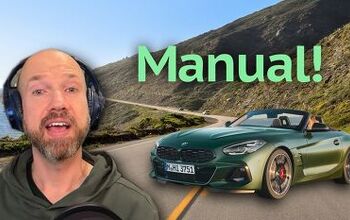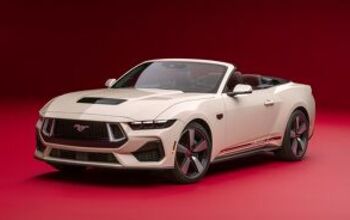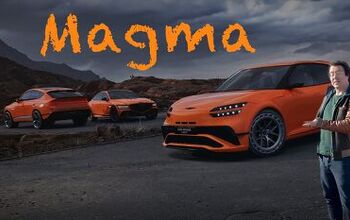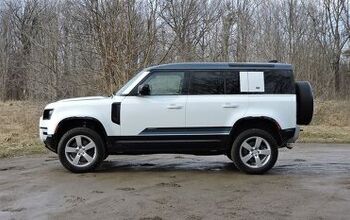Camaro ZL1: A Street Legal Race Car With the Podium Spot to Prove It – Video

In an unprecedented move, General Motors lent AutoGuide a Camaro ZL1 from the press fleet to race competitively against track-prepped cars with race tires. This is the story of how some good ‘ol American muscle earned more than just a podium finish; it earned respect.
Having tested Chevrolet’s segment-busting Camaro ZL1 earlier this year at Virginia International Raceway, I came away from that experience with a touch of post-traumatic stress disorder. I simply did not expect the ZL1 – a 4,100-lb behemoth – to corner with the kind of unrelenting grip and at-the-limit poise as it demonstrated around VIR. Nor did I expect a $55,000 retro-style sports coupe to have one of the most effective and tunable traction control systems I’ve ever tested, as well as magneto-rheological shock absorbers that adjust damping levels up to 1,000 times a second.
The technology hidden beneath the ZL1’s vintage-inspired sheet metal doesn’t end there either. This über Camaro also has greatly improved aerodynamics that produces meaningful downforce for some much needed high-speed stability. And just like you’d find on high-end performance machines and race cars, the ZL1 also has a whole host of auxiliary engine and transmission coolers onboard, along with a new slick-shifting 6-speed transmission that doesn’t require Schwarzenegger-like upper body strength to operate.
THE MASTER PLAN
All in all, I came away from VIR with the totally unexpected realization that the ZL1 really is a track-ready machine in every respect, so much so that I cooked up the hair-brained idea of putting it to the test against race-prepped machines of all shapes and sizes at a Time Attack event.
With a quick e-mail to Chris at CSCS, organizer of the biggest Time Attack series in Canada, I was told that the ZL1 would run in Super Street RWD class, one class up from where a factory stock rear-wheel drive road cars would normally be placed. Why you ask? Apparently it’s because of the ZL1 has supercar-like performance capabilities right off the showroom floor.
I was more than a little disappointed that the ZL1 wasn’t going to run in Street class. There it would have crushed the competition and the track record during CSCS’s season finale at Toronto Motorsports Park. Still, even in the Super Street class the ZL1 would have a fighting chance at a podium finish, despite competing with modified cars sporting super stiff racing suspensions and super sticky DOT race tires.
WHAT THE HECK IS TIME ATTACK?
Get the Flash Player to see this player.
For those unfamiliar with Time Attack competition, it’s a race against the clock, to see who can post the fastest single lap time around a road racing circuit. It’s similar in concept to qualifying for a F1 or NASCAR race, in that you’re not racing for position on the track, but rather for ranking based on lap time. American motorsport sanctioning bodies like the SCCA and NASA have called this type of racing everything from Solo 1 to Time Trials over the years, but these days the most widely used name is Time Attack, an irresistibly colorful term coined by the Japanese.
Time Attack classing is pretty straightforward. Cars are broken down into categories based on drivetrain configuration (FWD, AWD and RWD) and tire choice as well as permitted level of modification (Street, Super Street, and Unlimited). With the Camaro running in Super Street RWD (SSR), I knew we’d have our hands full trying to beat a local hot shoe with a C5 Z06 Corvette on race tires and some other clever upgrades (including a front splitter and a NASCAR Car Of Tomorrow rear wing), as well as a track-prepped E92 BMW M3 on race tires. Still, a podium finish was the goal and it looked entirely possible, assuming I could hustle the big ZL1 around this tight road course in a lap time below the 1-minute 21-second mark.
PRACTICE MAKES PERFECT?
Out on track during the practice sessions prior to the official Time Attack later in the day (which would consist of a warm-up lap, 3 timed laps, and a cool down lap), the action was both fast and furious and Fast & Furious. The big ZL1 was apparently ruffling a few feathers, because a surprising number of drivers in high-strung and highly modified Hondas were doing there best to not let me pass. Normally in practice sessions everyone’s pretty courteous, letting faster cars go by with a signal and a friendly wave. But for whatever reason, I had to bully my way past a few cars, a task the ZL1 is perfectly suited to thanks to its “fill your mirrors” proportions and its “eat my dust” acceleration.
By the end of the practice sessions, things were looking a bit tenuous for a podium finish. I was third fastest in the class, but there were a couple cars hot on my heels and two cars (the aforementioned C5 Z06 and M3) ahead of me. Still, I never got a clean lap in during practice because of all that F&F traffic, so I expected to go quicker than the 1:21’s I had done so far. But it was also possible that my competitors would be faster during their official Time Attack session too, since only 5 or 6 cars go out in a group and they’re spaced out so that there’s no issue with being held up by the cars ahead.
IT’S GO TIME!
The time had finally come to put up or shut up. I’d done my fair share of smack talking on Facebook about how I was going to show up with a bone stock ZL1 and beat up on a bunch of race-prepared Time Attack cars, so it was officially time for me to switch the big Camaro into PTM5 mode. This is the Performance Traction Management setting that allows you to floor the gas pedal halfway through a corner and let the computer determine exactly how much power should be sent to the rear tires for maximum traction. Sure, I could have turned the computer aids off entirely, but with an engine this powerful and so many tight corners where it’s easy to light up the rear tires and lose a lot of forward momentum, it just made more sense to let the computer work its magic.
Truth be told, what I really wanted to do in the ZL1 was break the 1-minute 20-second barrier. I have yet to test a press vehicle that has lapped this track in under 1:20, the Nissan GT-R coming closest with a 1:20 flat a few years ago. Since the ZL1 is reportedly faster around VIR than a GT-R, I thought perhaps today would be the day I’d see a 1:19 on the lap timer, a time that would also be quick enough to ensure a podium finish. But once I blasted out of pit lane for my 3-lap Time Attack session, my focus simplified to putting some heat into the Camaro’s tires before blitzing the braking zone into Turn 1, where the ZL1 hit a peak of -1.04g’s while decelerating and then pulled an even more impressive 1.25g’s in the corner.
Toronto Motorsports Park is, in fact, a circuit that puts a huge emphasis on braking, and although the ZL1’s brakes showed no signs of fading, a car this heavy does take longer to slow. As the saying goes, “You can’t cheat physics,” so on a tight road course like this one, the Camaro’s considerable heft was always going to be an issue.
Rapid changes in direction simply isn’t the ZL1’s strong suit – this is a machine best suited to big sweeping corners, like those found at high-speed circuits like VIR or Mosport. Still, the ZL1’s 3rd gen magnetic dampers and its magical PTM system did everything in their power to help this two-ton rocketship complete a hot lap in a time normally reserved for much nimbler machines on much stickier rubber.
As you’ll see and hear from the in-car video, on my final Time Attack lap the ZL1 and I managed a best time of 1:20.1-seconds. On the one hand I was thrilled and delighted by this time, because it was good enough for 2nd place in class, but on the other hand it was painfully, tantalizingly close to breaking into the elusive 1:19’s. Regardless, at the end of the day, the Camaro ZL1 had only further cemented (in my mind, at least) that it truly is a race-ready road car, a reality driven home even further by the fact that it was the fastest car in the entire event on street tires.
A SURPRISE ENDING!
But the real revelation at the end of my day attacking time in the ZL1 turned out to have very little to do with its on-track performance. What has stuck with me the most, now that the event has passed, is just how wildly popular the ZL1 was with spectators and fellow racers alike. When rolling through the paddock area and cruising down pit lane, I was getting the thumbs up from spectators and competitors of all ages, and I even had a few ladies give me a flirtatious “nice car!” endorsement.
Parked among track-prepared machines of all types, it was the ZL1 that had a constant crowd standing around it, asking me questions about it, and optimistically calling shotgun for the next practice session out on the track. This big, brash hunk of Detroit iron was getting more love than the twin Ferrari 430 Scuderias parked just a few hundred feet away.
This type of reception just goes to show that Chevy has officially struck a cord with the ZL1, and that there really is a significant fan base for muscle cars that do a lot more than just look cool and make snarly V8 noises.

Some say he's closely related to Bigfoot and that he's a former Canadian Touring Car Champion. All we know is he's the AutoGuide Stig! A thesis defense away from being your intellectual superior he's a professor of vehicle handling dynamics. The part-time touring car and time attack racer is faster (much faster) than your average auto journalist.
More by Dave Pratte


































Comments
Join the conversation
Dave Pratt tell Colum Wood about a real modern muscle car the Camaro.Nice article on a great car. Thankfully it's no Mustang Thanks
Enjoyed the article. Wonder what the Boss would do on VIR?Td